Minneapolis
CNN
—
On a breezy morning in July, Fabian Jones rode his new bike to the homeless shelter where he lived earlier this year.
“Here’s one of our success stories,” said Michael Goze, head of the nonprofit that runs the emergency shelter, known as Homeward Bound, located in the heart of Minneapolis’ large Native American community.
Jones, 52, was spending the day moving his things from a storage unit and into a new apartment he found earlier in the summer, with some help provided by case workers at Homeward Bound.
“My bike is like a U-Haul,” Jones said with a laugh, while showing off the key fob to his new place.
Jones said that he’s spent time at every shelter in Minneapolis over the years. But things turned around for him at Homeward Bound, where a person is treated “like a human being,” according to Jones. As a culturally specific shelter, it holds American Indian rituals like smudging, a ceremony meant to drive away negative energy. A variety of support services for physical and mental health are offered, and there are lockers so individuals can store their possessions safely.
“It’s hard being homeless every day. You can’t take a day off, or rest for a bit. You gotta eat, you gotta figure out where you’re going to sleep and shower. It’s a constant thing you’re doing in survival mode,” he added.
Jones is one of hundreds of people that Hennepin County – the largest in Minnesota and the place where George Floyd was murdered by police – has moved off the street and into permanent housing since the onset of the Covid-19 pandemic in 2020.
The Homeward Bound shelter, which opened at the end of 2020, is located not far from where a large tent encampment, known as the Wall of Forgotten Natives, once stood, drawing attention to the homelessness problem and kick-starting Hennepin County’s efforts to address the affordable housing crisis.
With financial help from the federal pandemic aid packages passed by Congress, Hennepin County has been able to move at lightning-fast speed to implement a multilayer plan addressing housing and homelessness – work that usually moves at a snail’s pace.
Over the past two years, the county has opened three new emergency shelters, including Homeward Bound, and upgraded several others. It has purchased five properties that are being converted into affordable housing and is helping finance 16 other new projects driven by private developers. Twenty-six new social workers were hired to help those experiencing homelessness move into their own housing.
Soon after Minnesota’s pandemic-related stay-at-home order took effect in March 2020, metro transit buses were rolling up to emergency shelters to pick up people who were over 60 years old and may have been more at risk of contracting Covid-19.
They were moved into one of several hotels that Hennepin County – like other places across the country – decided to lease so that some of the most at-risk people in the community could move out of congregant shelters, reducing their chances of contracting Covid-19.
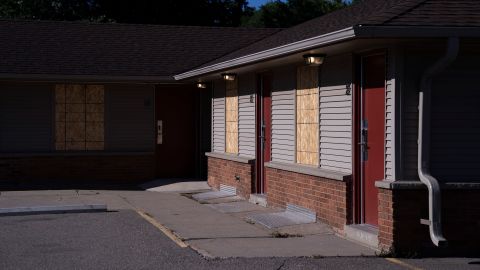
But Hennepin County quickly pivoted to a longer-term strategy. Instead of leasing the properties, it bought them with the intent of eventually converting them into housing for very low-income, single adults – or what’s known as single-room occupancy housing. It’s the kind of housing that is sorely missing in not just Minneapolis but across the country.
By the end of 2020, Hennepin County owned four properties: Three were smaller, older motels long past their prime, and one was a treatment facility. The latter is already filled with residents, and the former motels are currently being renovated. The county recently purchased an additional motel and is eyeing another.
During the height of the pandemic, some of Hennepin County’s chronically homeless individuals stayed for more than a year at the former Metro Inn Motel, one of the properties purchased in 2020, before the county began construction to convert it into permanent housing. It was here that the county’s newly expanded social work team had the time and flexibility to help many of them find permanent housing.
“These are guys who probably would not have worked with the traditional route of getting housed in the shelter systems,” said Jamie Wolff, one of Hennepin County’s social workers, whose position was made possible by the federal pandemic funds.
Most of the clients were older men who had been homeless for years, and some needed extra services, like assisted living. For the first time in a long while, many of the residents had a place to stay where they could come and go as they wished without packing up all their belongings.
“Without the Metro, I don’t think a lot of these guys that I eventually did get housed would have found housing. This was a great steppingstone for them,” Wolff added.
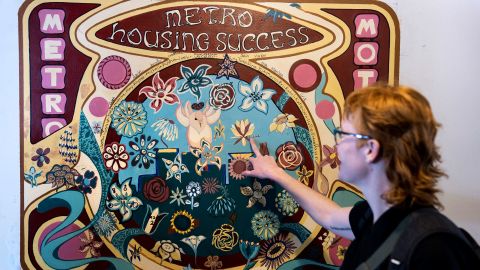
Social workers like Wolff help people navigate the numerous hurdles there may be to finding housing, including addressing their mental and physical health needs. Sometimes she helps people fill out paperwork for rental subsidies or vouchers for which they may be eligible. For others, Wolff may talk to landlords about taking on a tenant with a criminal record.
“We made sure everyone staying in a hotel had a social worker responsible for working alongside them to get them into permanent housing. It’s something we didn’t have in that really focused way in our system before the pandemic,” said David Hewitt, Hennepin County’s director of housing stability.
For some, the process went quickly, but for others it took a lot of time and effort.
“We had one man who sacked eight different social workers, I think, including me. But we got him into housing in the end,” Hewitt said.
The numbers show that the strategy was effective.
By March 2022, Hennepin County had found permanent housing for 464 of the 540 people who had been moved into a hotel during the pandemic, and 97% of those housed have remained in their homes.
The lack of affordable housing is a challenge that communities across the country have been facing for decades. In many places, rent increases have far outpaced wages. In Minnesota, for example, a minimum wage worker would have to work 70 hours a week to be able to afford the rent of a one-bedroom home.
Encampments – which were largely permitted during the pandemic, per guidance from the US Centers for Disease Control and Prevention – have gained attention in cities across the country. Earlier this year, homelessness and crime were hot-button election issues in liberal cities like San Francisco and Los Angeles.
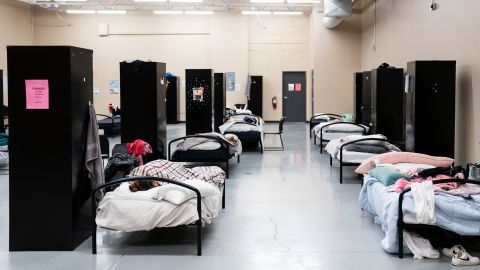
More and more states and localities are passing laws that criminalize homelessness or sleeping outside, said Eric Tars, legal director at the National Homelessness Law Center.
“The political incentives are kind of off,” Tars added, noting that passing those laws is sometimes easier, faster and cheaper than building more affordable housing.
Prior to the 1980s, homelessness was not as widespread across the US. But in 1998, Congress – through what’s known as the Faircloth Amendment – capped the number of public housing units that can receive federal funding from the US Department of Housing and Urban Development, essentially halting new construction of public housing.
What Hennepin County is doing gets around that cap because the county owns the properties that are being converted to affordable housing.
One reason the county has been able to move so fast is that officials decided to allocate more than $90 million – representing roughly 40% of the pandemic funding it received from the federal government since March 2020 – to address homelessness and affordable housing. It also already had an extensive plan in place.
Not all of those dollars being spent are directly from the aid packages passed by Congress, due to restrictions on how the money can be used. But county officials say having that influx of dollars to fill in budget gaps elsewhere freed up the money for tackling homelessness and housing.

“We would have never bought four buildings at one time without the federal funding,” said Julia Welle Ayres, Hennepin County’s director of housing development and finance.
The county has already allocated well over half of the $90 million. The funds allocated to date will support the development of 2,523 affordable housing units.
While early indicators show success – Hennepin County’s January point-in-time homeless count was the lowest since it started to keep track in 2005 – it remains to be seen how effective the county’s approach to addressing homelessness will be in the long term and if it can work elsewhere. There were still more than 2,600 people experiencing homelessness, 487 of whom were unsheltered, at the time of the count.
In January 2021, after years of being homeless, Beverly Jean Lazaro-Glenn got a call from a social worker who had found her a rental apartment. It was in Stevens Square Residence, one of the properties recently purchased by Hennepin County and converted from a treatment facility into deeply affordable housing.
Even though Lazaro-Glenn, 53, can afford to pay rent, previous landlords had rejected her application. She lacked a recent rental history and had faced a previous eviction action – and she wanted to live with her fiance, who has a criminal record.
“It was very hard for us to find a place. If we hadn’t gotten in here, we probably would be back on the street in our tent,” Lazaro-Glenn said.

The couple was accepted by Alliance Housing, a nonprofit that leases the Stevens Square Residence building from the county, and moved in just in time for Lazaro-Glenn to recover from back surgery.
A key feature of Hennepin County’s plan is to focus on creating a variety of housing rather than solely increasing the number of units created. Some affordable housing developments are for singles and others are for families. Some offer extensive support services.
There are also people experiencing homelessness who benefit from a place like Stevens Square Residence, because it charges a low rent without the tenant needing an income-based subsidy, like a voucher, which can be hard to receive continually for people whose wages fluctuate.
Lazaro-Glenn and her fiance have their own room and share a laundry room and kitchen with the other tenants, paying $510 a month in rent.
Alliance also provides a property manager, Tiffany Simmons, who not only tends to maintenance issues but helps support tenants in a variety of ways – from helping them sign up for benefits from the county to setting up a rent payment plan if their income temporarily takes a hit.
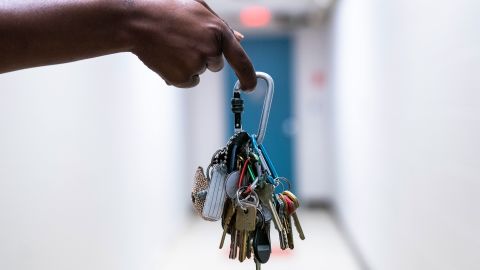
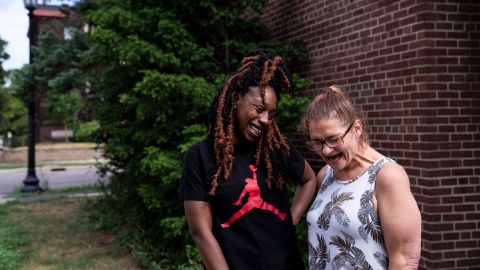
Simmons calls it “hands on” property management, but that might undersell the significance of her role in the lives of some residents like Lazaro-Glenn – who often calls her with questions as well as ideas about bringing the tenants together, like a Fourth of July barbecue or decorating a Christmas tree in the shared living space.
“If you weren’t the manager, and you and me didn’t click and become friends like we did, I don’t think I would have made it,” Lazaro-Glenn told her.
“You would have been fine,” Simmons replied.
“Even if we got on a list for another apartment, I don’t want to move. I want to stay right here,” Lazaro-Glenn said.
In a neighborhood reeling from not only the pandemic but from the civil unrest following the murder of George Floyd, a new affordable housing development with 41 apartments for very low-income families is expected to open next year at the site of the current Calvary Lutheran Church.
It’s exactly what Hennepin County Commissioner Angela Conley believes the community needs to help rebuild.
“We’re still healing, especially in this immediate area,” Conley said, sitting inside the Calvary Lutheran Church, located just one block from George Floyd Square.
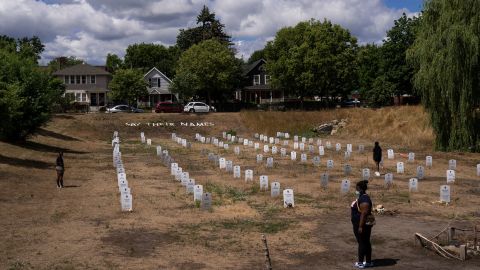
The corner outside the Cup Foods convenient store where Floyd was murdered by police in 2020 continues to serve as a memorial and gathering place for people to remember him and other victims of police brutality.
But even before the pandemic and civil unrest swept through the city, affordable housing was becoming out of reach for generations of people living in the historically Black neighborhoods in southern Minneapolis. Earlier this year, the community helped raise $275,000 so that a 70-year-old woman could stay in the home where she’s lived for nearly 20 years.
“When you don’t have secure access to housing, it triggers all these other disruptions in people’s lives,” said Conley, who struggled to find her own housing years ago as a young single mom.
“When I was able to secure housing, I wasn’t worried about keeping my job and day care and all these other things,” she added.
Trellis, a private company that specializes in developing affordable housing, is set to buy the Calvary Lutheran Church, whose congregation was looking to sell the property. The facility will also offer support services to the families that move in through the help of a nonprofit called Simpson Housing Services.
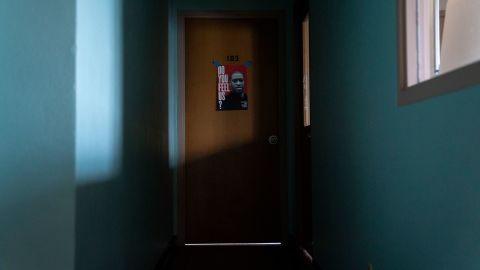
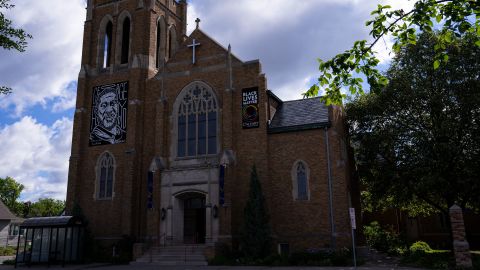
Fifteen of the units are set to be reserved for people experiencing chronic homelessness. But all of the units are reserved for people who earn less than 30% of the average median income in the area – an in-demand sweet spot that’s incredibly hard to meet with the amount of funding that’s typically available. That income threshold amounts to about $22,000 a year for a single person.
Hennepin County has allocated more than $23 million of the $90 million available for addressing housing and homelessness for an accelerator fund that helps private companies create affordable housing – with an emphasis on projects impacted by areas of civil unrest after Floyd’s murder and projects being developed by people of color. Most of that money is expected to be allocated this year, and the influx allows Trellis to finish converting the church months, if not years, faster than usual, opening within the next 12 months.
“It typically takes round after funding round, taking maybe five years for such a complex project,” said Elizabeth Flannery, CEO of Trellis.
“I get goosebumps when I think about it,” she added.